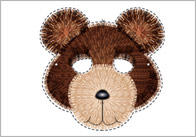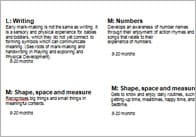‘Teacher in role’ technique
Today’s blog is about using Drama in Early Years setting. Drama is an excellent tool to use in any Early Years setting as it not only stimulates creativity and imagination in a fun and enjoyable way but it can heighten a child’s self-confidence and improve concentration and co-operation skills. One of the most effective drama techniques that I have used in the classroom with young children is the “Teacher in Role” technique.
What is the “Teacher in Role” technique?
The teacher takes on a role as part of a story and the children interact with the teacher inside the confines of this role. I can see many teachers response being but “I can’t act”. You don’t need to be a wonderful actor to successfully use this technique. It just takes a bit of creativity and planning.
Why should you use “Teacher in Role”?
This technique allows the child to engage with the story of the drama fully. If the teacher is fully involved in her/his role it makes much easier for the children to use their imagination and enter into their own roles. It is an effective way to get the children and fell like they have some ownership of a story.
How do you use “Teacher in Role”?
The teacher explains very clearly at the outset that they are going to take on a particular role/s in the drama. It is important that the teacher chooses the roles carefully. The must think about what the learning objective is for that particular drama.
For example…
If the objective is:
– To stimulate the imagination: the teacher could take on the role of Aladdin and the children could ask what he had seen the magical cave.
– To help reach a consensus: the teacher could be a policeman who has come to find out what happened to Humpty Dumpty when he fell off the wall and the children could be witnesses to the accident or some of them could be the King’s horse and the King’s Men.
– To help make suggestions – the teacher could be someone with a problem looking for a solution for example they could be Snow White lost in the forest and she doesn’t know what to do. The children could offer her choices.
– To offer advice – the teacher could be Jack from Jack and the Beanstalk. He could be looking for advice whether to accept the beans, climb the beanstalk, etc..,
The teacher can assume more than one role in the drama. However she/he should make it very clear to the children whenever H/she uses a certain prop or costume they are in role as that particular person.
Example:
If she wears an apron she is Jack’s mother
If she picks up a baton she is the police officer.
If she holds a lamp she could be Aladdin.
It is important that the teacher comes out of role at certain times during the drama as this will allow the children and teacher to feedback and reflect what is happening within the drama and move it forward.
When should you use the teacher in role technique?
The teacher in Role (TIR) technique can be used at any age or level however it is particularly effective with younger children as they are willing to take on any role they are given without question. They are very quick to use their creativity and engage in an imaginary world. For more ideas to use in the Drama class you can buy “Drama Start” by Julie Meighan in paperback here or you can buy the an ebook version here. Insert the following code to get 20% of the ebook price.
Julie Meighan is a lecturer in Early Years Education at the Cork Institute of Technology. She has over 15 years experience of teaching Drama to children.
Popular Teaching Resources
Stay Up To Date
Sign up for our newsletter and we’ll let you know when we create new early years resources.





